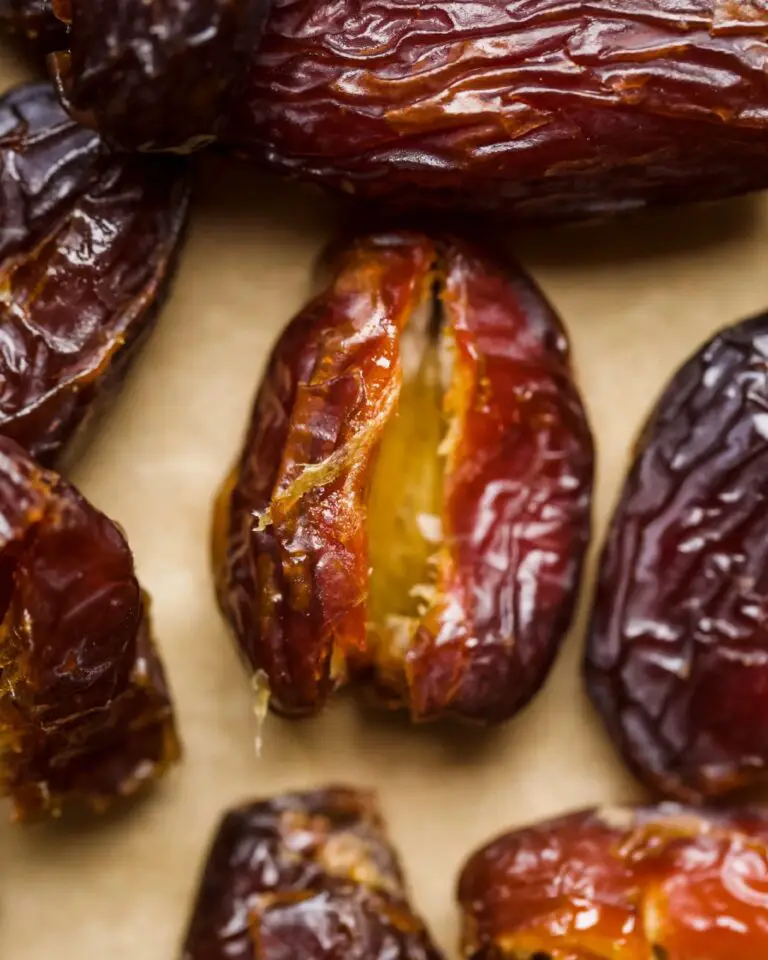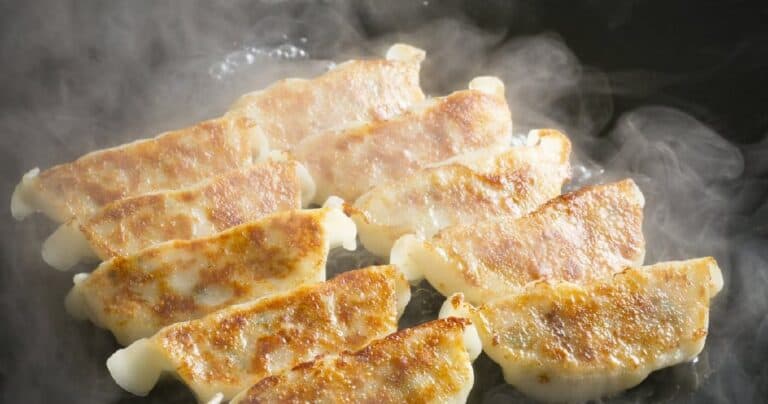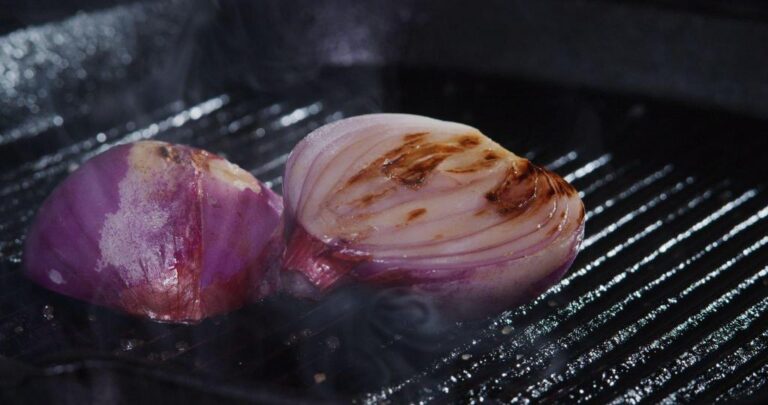What Cheese To Use for Saganaki? Best Cheeses for Classic Greek Saganaki

Saganaki is a classic Greek dish that’s known for its delicious, melted cheese. But with so many different types of cheese available, it can be tough to know which one to use.
Saganaki is typically made with a firm and salty cheese that has a strong flavor. The cheese is melted in a hot pan until it is golden brown and bubbly, creating a delicious appetizer that is rich in flavor and texture. So, what cheese should I use for saganaki? Some of the most popular cheeses used in Saganaki include Feta, Kasseri, Kefalotyri, Graviera, and Halloumi.
In order to make a perfect saganaki, it is important to consider the texture, flavor, melting point, and fat content of the cheese. The right cheese will melt evenly and make a tasty, gooey texture that goes well with the dish’s savory flavors.
In this post, we’ll talk about the best cheeses for saganaki and what makes each one a great addition to this traditional dish. Get ready to up your saganaki game with the perfect cheese choice!
What is Saganaki and Why It Is So Popular
Saganaki is a traditional Greek dish that is made with a type of cheese, typically Kefalotyri or Feta, that is fried in a small frying pan. The dish is named after the pan, which is called a “saganaki,” and is a popular and beloved dish in Greece. It is usually served as an appetizer, and lemon and bread are often served with it.
One reason for the popularity of saganaki is its delicious flavor. The cheese is fried until it is crispy on the outside and gooey on the inside, creating a unique texture that is both crunchy and creamy. The cheese also has a salty, tangy flavor that is a perfect complement to the lemon, making saganaki a flavorful and satisfying dish.
Another reason for the popularity of saganaki is its versatility. The dish can be enjoyed on its own as an appetizer, or it can be paired with other Greek dishes, such as souvlaki, to create a delicious and filling meal. It can also be served with a variety of dips, such as tzatziki, to add even more flavor to the dish.
Saganaki is also a popular dish because it is easy to make. The cheese is simply fried in a pan, making it a quick and convenient option for those who are short on time. This makes saganaki a popular choice for people who want to enjoy a delicious and satisfying meal without having to spend hours in the kitchen.
Finally, saganaki has become popular all over the world because it is a part of Greek culture and cuisine. People are drawn to the dish because it is a traditional and authentic Greek dish that offers a taste of the country’s history and culture. If you like Greek food or just want a tasty dish, saganaki is a good choice.
The Importance of Cheese in Saganaki
Cheese is the most important ingredient in saganaki, and choosing the right cheese is crucial for creating a delicious and authentic dish. The traditional cheese used in saganaki is Kefalotyri or Feta, both of which are salty, tangy, and flavorful.
These cheeses are made from sheep’s milk or a combination of sheep’s and goat’s milk, and they have a unique taste that is perfect for saganaki.
Kefalotyri and Feta are also important in saganaki because they have a high melting point, which allows them to be fried without becoming too runny. This means that the cheese will retain its shape and texture when it is fried and will not become too greasy or messy. This is a must if you want the outside of your saganaki to be crispy and the inside to be gooey.
In addition to its flavor and texture, the cheese used in saganaki also has cultural significance. Kefalotyri and Feta are both traditional Greek cheeses that have been made for centuries, and they are an important part of Greek cuisine and culture. Using these cheeses in saganaki helps to preserve the cultural heritage and tradition of Greek cuisine, and it allows people to experience the authentic flavor of Greece in every bite.
Cheese is also important in saganaki because it provides a rich source of protein and calcium. These nutrients are essential for a healthy diet, and they can help keep you feeling full and satisfied after eating saganaki. This makes saganaki a nutritious and satisfying option for those who are looking for a quick and easy snack or meal.
What Cheese To Use for Saganaki? Popular Cheeses for Saganaki
1. Feta
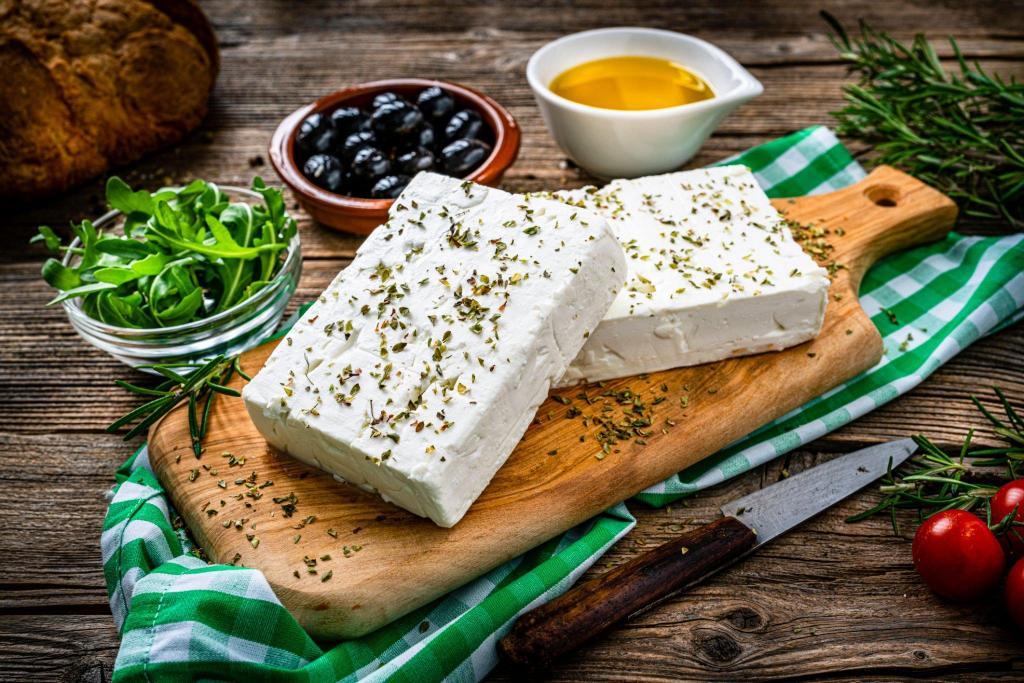
Feta is a crumbly, tangy cheese that is made from sheep’s milk or a combination of sheep’s and goat’s milk. It is widely considered to be one of the best cheeses for Saganaki due to its rich and salty flavor as well as its ability to melt easily and evenly.
2. Kasseri

Kasseri is a hard and slightly salty cheese that is made from sheep’s milk. It has a nutty flavor and a slightly sweet aftertaste, making it a great choice for saganaki. Kasseri also has a high melting point, which means that it will hold its shape and texture even when melted.
3. Kefalotyri
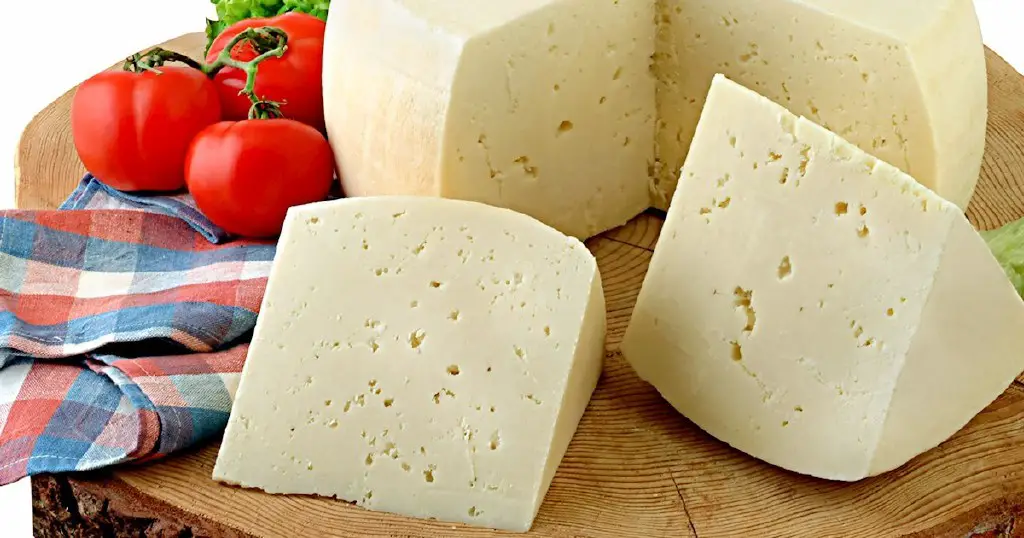
Kefalotyri is a hard, salty cheese that is made from sheep’s or goat’s milk. It has a strong flavor and a slightly tangy aftertaste, making it a great choice for Saganaki. Kefalotyri has a high melting point, so it will hold its shape and texture when melted, which makes it an excellent choice for a gooey and delicious saganaki.
4. Graviera

Graviera is a semi-hard cheese that is made from sheep’s or cow’s milk. It has a nutty flavor and a slightly sweet aftertaste, making it a great choice for Saganaki. Graviera has a low melting point, so it will become creamy and gooey when melted, creating a delicious and savory dish.
5. Halloumi

Halloumi is a semi-hard cheese that is made from sheep’s and goat’s milk. It has a salty flavor and a slightly tangy aftertaste, making it a great choice for Saganaki. Halloumi has a high melting point, so it will hold its shape and texture when melted, creating a delicious and crispy dish.
These are just a few of the many cheeses that can be used in Saganaki. Each cheese has its own unique flavor and texture, so it is important to choose the right one based on your personal preferences and the flavors you are looking to achieve in your dish.
How to Make Perfect Saganaki with Feta and Kasseri Cheeses
Saganaki is a delicious and versatile dish that can be made with a variety of cheeses, each with its own unique flavor and texture. Here are four different cheese options for making perfect saganaki, along with instructions for each:
1. Feta Saganaki
Ingredients:
- 1/2 lb Feta cheese, sliced
- 2 tbsp flour
- 2 tbsp olive oil
- lemon wedges (for serving)
Instructions:
- Slice the Feta cheese into 1/2 inch slices.
- Dust each slice of cheese with flour, making sure to coat both sides.
- Heat the olive oil in a small frying pan over medium heat.
- Add the cheese slices to the pan and cook for 2-3 minutes on each side, or until they are golden brown.
- Serve immediately with lemon wedges.
2. Kasseri Saganaki
Ingredients:
- 1/2 lb Kasseri cheese, sliced
- 2 tbsp flour
- 2 tbsp olive oil
- lemon wedges (for serving)
Instructions:
- Slice the Kasseri cheese into 1/2 inch slices.
- Dust each slice of cheese with flour, making sure to coat both sides.
- In a little frying pan over medium heat, warm the olive oil.
- Add the cheese slices to the pan and cook for 2-3 minutes on each side, or until they are golden brown.
- Serve immediately with lemon wedges.
Can I Substitute Mozzarella for Halloumi?
Mozzarella cheese is often used as a substitute for halloumi, but is it the best option? While it is true that mozzarella has a similar taste to halloumi, there are some key differences that make it a less ideal substitute.
One of the biggest differences between mozzarella and halloumi is their melting point. Mozzarella has a lower melting point than halloumi, meaning it will become more gooey and stringy when heated. This can make it difficult to get that crispy texture that is so characteristic of saganaki.
Another difference between the two cheeses is the way they crumble. Halloumi is known for its ability to hold its shape when cooked, even if it is sliced thinly. Mozzarella, on the other hand, does not have the same crumbly texture as halloumi and is more likely to fall apart when cooked.
While mozzarella can be a decent substitute for halloumi in a pinch, there are other cheeses out there that are better suited for the job. For example, Kefalotyri, Kasseri, and Graviera are all cheeses that are similar in taste and texture to halloumi and are often used as substitutes.
Conclusions
Saganaki is a classic Greek dish that is made by pan-frying cheese until it is golden brown and bubbly. The right cheese is crucial for creating a delicious and memorable dish, so it is important to choose the cheese carefully.
When choosing the cheese for your Saganaki, consider the texture, flavor, melting point, and fat content of the cheese. A cheese that is too soft or has a low melting point may become stringy or greasy, which can detract from the overall flavor and texture of the Saganaki.
Popular cheeses for Saganaki include Feta, Kasseri, Kefalotyri, Graviera, and Halloumi, among others. Each cheese has its own unique flavor and texture, so it is important to choose the right one based on your personal preferences and the flavors you are looking to achieve in your dish.
In the end, the best cheese for Saganaki is one that melts evenly and makes a tasty, gooey texture that goes well with the savory flavors of the dish. With a little bit of experimentation and knowledge of the different cheeses available, you can create a perfect saganaki every time.




